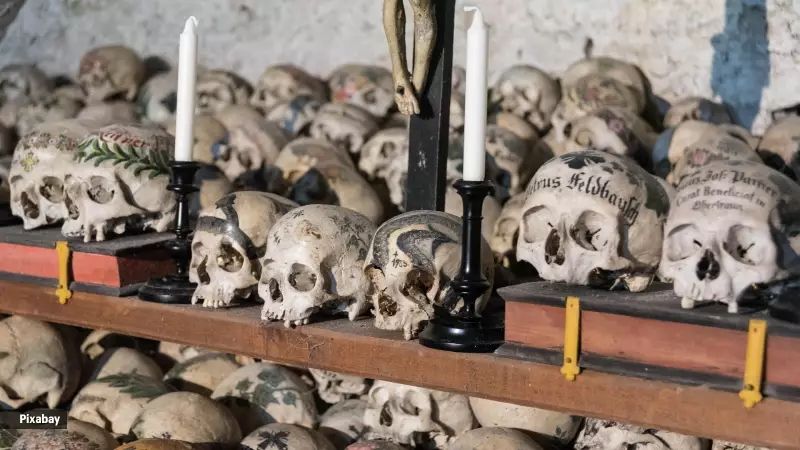
Nestled in the quiet Czech town of Kutná Hora, just an hour's journey from Prague, stands one of the world's most unique and thought-provoking monuments—the Sedlec Ossuary, universally known as the Church of Bones. From its unassuming Gothic exterior, one would never guess at the astonishing spectacle that lies within: the meticulously arranged skeletal remains of approximately 40,000 individuals, transformed into profound works of art.
The Sacred Origins and a Grim Accumulation
The story of this extraordinary chapel begins in the 13th century. A Cistercian abbot, returning from a pilgrimage to Jerusalem, brought back a small amount of soil from Golgotha, the site revered as the place of Jesus Christ's crucifixion. He sanctified the local Sedlec cemetery by scattering this holy earth, instantly making it one of the most desirable final resting places in Central Europe.
Centuries later, the cemetery faced an unimaginable challenge. The devastating Black Death pandemic in the 14th century, followed by the Hussite Wars, resulted in a massive number of deaths, completely overwhelming the burial ground. To manage the space, thousands of bodies were exhumed, and their bones were stored within the chapel's crypt, presenting monks with a vast and sobering collection of human remains.
The Artistic Transformation by František Rint
For centuries, the bones remained in storage until a creative solution was commissioned in 1870. A local woodcarver named František Rint was tasked with organizing the skeletal chaos. What he created was far beyond simple organization; it was a masterpiece of memento mori.
Rint's vision resulted in breathtaking and solemn decorations. His most famous creation is a colossal chandelier situated in the center of the chapel, which astonishingly incorporates every single bone found in the human body. Other features include intricate garlands of skulls adorning the vaults, towering pyramids of bones in each corner, and even a detailed coat of arms for the aristocratic Schwarzenberg family, all crafted meticulously from human skeletons.
A Place of Peaceful Reflection, Not Fear
Contrary to what one might expect, visitors consistently describe the atmosphere inside the Sedlec Ossuary as peaceful and serene rather than macabre or frightening. The soft, coloured light filtering through stained-glass windows illuminates the bone sculptures, creating a quiet, reflective space that invites contemplation on life, mortality, and the shared human experience.
Today, the Church of Bones stands as a powerful global attraction, drawing over 200,000 visitors every year. It serves as a poignant reminder that beauty and mortality are not opposites but can coexist, creating a space that is less about death and more about remembrance, reverence, and the enduring art found in what remains.





